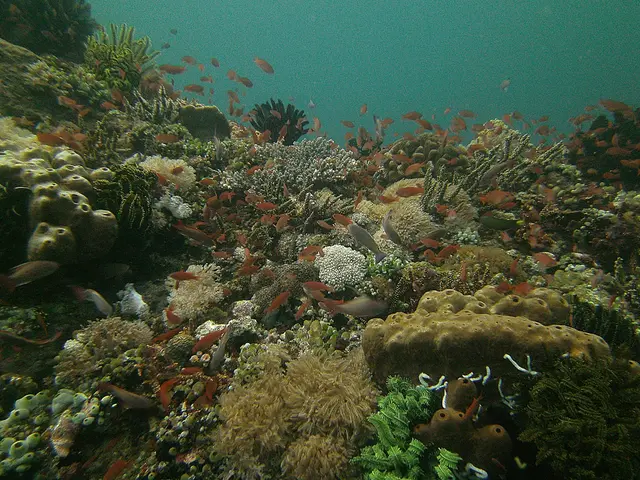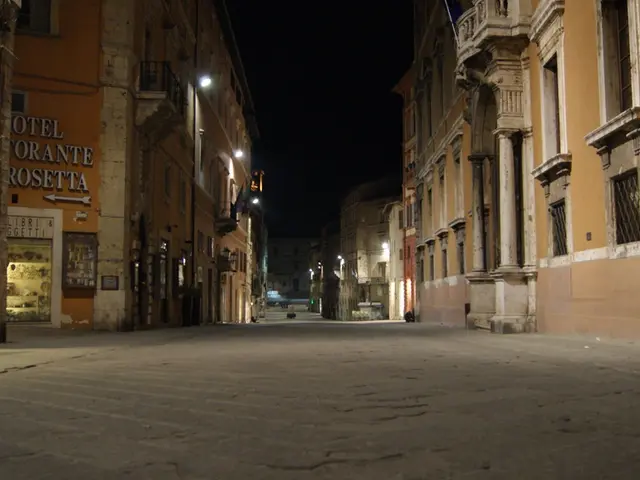EU Regional Development Catalyzed by Natural Resources
Leveraging Nature for Progress: Maximizing Economic Growth and European Cohesion
Natural assets and resources, often referred to as natural capital, play a crucial role in fueling economic activities, particularly in regions heavily reliant on natural resource-intensive sectors. A recent study from the JRC has offered insights into the economic growth impact of natural capital in EU regions at the NUTS2 level, a classification used for EU cohesion policy funding.
The study proposes that a 10% rise in natural capital results in a 0.7% increase in gross value added. Direct contributions account for 0.4%, with the remaining 0.3% attributed to regionally shared benefits. In practical terms, a 10% increase in the annual average value of natural capital (approximately €9.3 billion) could lead to a total economic boost of €71.4 billion across EU regions (0.7% of the €10,195 billion GVA).
It's essential to note that the influence of natural capital on economic growth varies across regions. Regions that prioritize investments in natural capital can experience greater returns, combining economic growth for both themselves and neighboring regions, thereby strengthening regional cohesion and amplifying the economic impact on a larger scale. Conversely, areas with less natural capital contribution may necessitate more targeted interventions to foster their potential.
In essence, safeguarding biodiversity and rejuvenating ecosystems can help unleash natural capital potential in less prosperous regions and propel the EU cohesion policy, which aspires to minimize regional disparities.
The findings stemmed from research done within the Integrated Natural Capital Accounting (INCA) project and are presented in the report Natural capital and regional growth: Insights from the European Union. These results will inform the next phase of the EU cohesion policy (2028-2034).
Enhancing Growth Models with Natural Capital
The European Green Deal, the EU Biodiversity Strategy for 2030, and the EU's Cohesion Policy advocate for ensuring regional economic growth does not compromise nature. Traditional growth models tend to overlook the importance of natural resources and assets, leading to an imcomplete understanding of economic progress. Incorporating natural capital into growth models provides a more comprehensive understanding of the role of ecosystems in delivering vital services, such as pollination, soil protection, and CO2 sequestration.
This recognition drives a shift towards more sustainable and environmentally-friendly economic practices and policymaking, aligning with the green transition goals.
Building upon the Basics
The EU is championing initiatives like SELINA (Science for Evidence-based and Sustainable Decisions about Natural Capital) that focus on creating guidance, tools, and models to aid decision-making in the protection, restoration, and sustainable utilization of natural capital. By harmonizing ecosystem services accounting and biodiversity conservation across Europe, these resources contribute to informed decisions in policy and business practices.
Furthermore, the Biodiversity Strategy for 2030, embarking on a path to restore Europe's biodiversity by 2030, focuses on restoring degraded ecosystems and enhancing natural capital to benefit people, the climate, and the planet. This initiative supports the objectives of the European Green Deal by integrating natural capital considerations into policy and growth strategies.
The EU's Cohesion Policy also funnels EU funding towards natural capital restoration and preservation projects, promoting green infrastructure and ecosystem-based approaches to enhance regional resilience and competitiveness.
Looking Ahead: Towards a Sustainable Future
By integrating natural capital into economic growth models, policymakers and businesses can make informed decisions that promote sustainability, ecosystem restoration, and biodiversity conservation. Cross-cutting strategies include natural capital accounting and ecosystem services valuation, as well as the encouragement of voluntary biodiversity credit systems and ecosystems services markets to mobilize private financing for nature. Innovation in environmental governance and economic frameworks will ensure the sustainable utilization of natural resources, aligning economic growth with sustainability and biodiversity recovery objectives across Europe.
- By examining data on natural capital, we can understand how biodiversity and ecosystems contribute to the economy, helping us make decisions that promote sustainable growth and environmental conservation.
- Economic growth models that incorporate natural capital can lead to a more comprehensive understanding of how nature provides essential services like pollination, soil protection, and carbon sequestration.
- Incorporating natural capital considerations into policy and business practices will contribute to the green transition goals, aligning with the European Green Deal, the EU Biodiversity Strategy for 2030, and the EU's Cohesion Policy.
- Sustainable lifestyle choices at home and in the garden can play a significant role in conserving natural capital and promoting sustainable living.
- The EU's SELINA initiativeprovides guidance, tools, and models for protecting, restoring, and sustainably utiliizing natural capital, which contributes to informed decisions in policy and business practices.
- The Biodiversity Strategy for 2030 seeks to restore Europe's biodiversity by 2030, focusing on enhancing natural capital to benefit people, the climate, and the planet. This strategy is in line with the European Green Deal's objectives of integrating natural capital considerations into policy and growth strategies.
- Businesses can invest in sustainable practices and technologies that minimize their environmental impact, allowing them to contribute positively to biodiversity conservation and climate change mitigation while also advancing their financial growth and personal growth through education and self-development.







